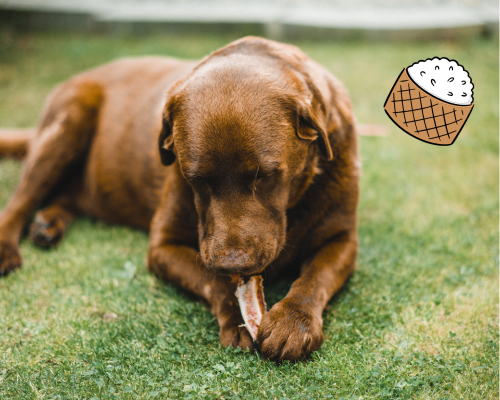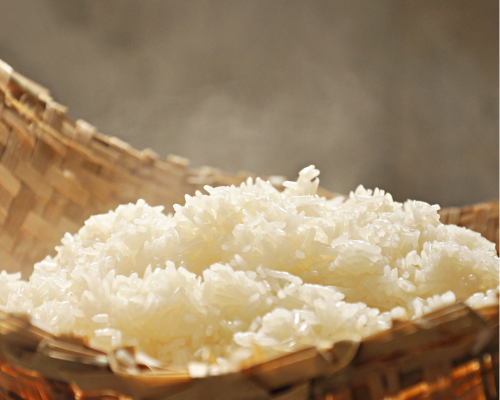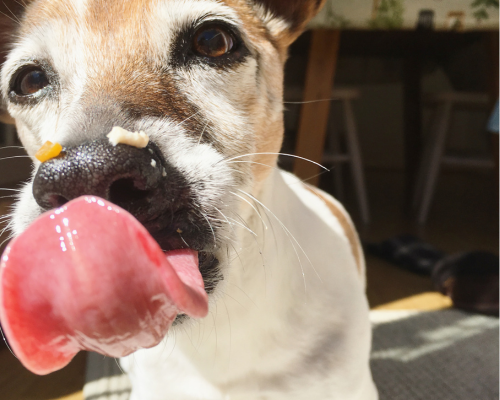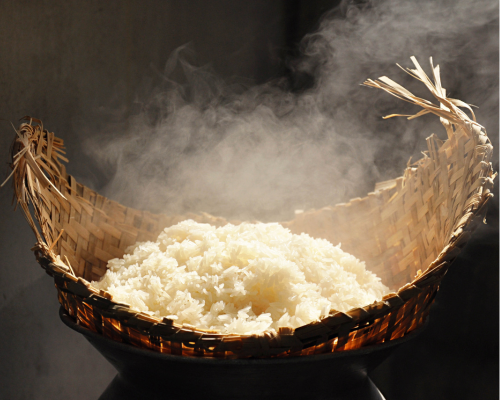Can Dogs Eat Sticky Rice? What You Need To Know!
Can Dogs Eat Sticky Rice? What You Need To Know!

Vet Reviewed

By: Sarah Hodgson
November 12, 2023
- Posted in Can Dogs EatDogs
Table of Contents
Dogs eat everything because they are curious. It's a natural instinct for them to want to taste everything. However, before giving your dog any type of food it's best to check if it's even safe for dogs.
In this article, we'll be going over whether sticky rice is safe for dogs. What benefits or risks does it pose to our dogs? Let's dive in!
What Exactly is Sticky Rice?
Before we dive into whether sticky rice is safe for dogs, let’s first understand what exactly sticky rice is.
Also known as sweet rice, sticky rice is a type of rice that is particularly sticky when cooked.
Sticky rice is a staple in many Asian cuisines, especially in dishes like sushi, rice cakes, and mango sticky rice desserts. It's also used in many traditional festival foods and is fun to eat.

Can Dogs Eat Sticky Rice?
To answer simply, yes!
Yes, dogs can eat sticky rice. While sticky rice is not harmful to dogs, it doesn't mean you should feed your dog sticky rice regularly. Sticky rice is safe for dogs in small amounts and should always be served cooked and unseasoned.
Feeding your dog large quantities of sticky rice can lead to obesity and other health issues because of its high carbohydrate ingredients. It also lacks the necessary proteins and fats that dogs need, which they get from meat-based diets. So you can feed sticky rice to dogs but keep it in moderation.
Is there any Nutritional Value in Sticky Rice For Dogs?
So it's safe for dogs, but does it provide any nutritional benefits?
- Carbohydrates: Sticky rice is a good source of carbohydrates, providing energy for your dog's daily activities.
- Calories: It can contribute to your dog's overall calorie intake, which is important for maintaining energy levels.
- Low in fat: Sticky rice is generally low in fat, which can be beneficial for dogs that need a lower-fat diet.
- Protein: While sticky rice contains some protein, it is not a complete protein source. Dogs require a balanced diet with adequate protein from meat sources.
- B Vitamins: Sticky rice contains some B vitamins, including B1 (thiamine) and B3 (niacin), which play roles in energy metabolism.
- Fiber: It has minimal dietary fiber, so it may not be as effective in promoting digestive health compared to other fiber-rich foods.
Note
Despite its nutritional value, sticky rice should not be the main source of your dog's diet. Their diet should consist mainly of high-quality proteins. Carbohydrates like sticky rice can be a part of their meals, but only in moderation.
The Benefits and Risks of Feeding Dogs Sticky Rice
Feeding your dog sticky rice comes with both benefits and risks. On the one hand, sticky rice can provide a quick energy boost for your dog due to its high carbohydrate content. It's also easy to digest, making it a good option for dogs with sensitive stomachs.
However, on the downside, feeding your dog too much sticky rice can lead to weight gain and obesity.

How to Safely Introduce Sticky Rice into Your Dog's Diet
If you decide to feed your dog sticky rice, there are a few precautions you should take.
- Firstly, always serve the sticky rice cooked and without any seasonings or sauces.
- Secondly, only give your dog small amounts of sticky rice and observe their reaction. If they show any signs of discomfort or allergic reactions, stop feeding them the rice immediately.
Always remember that sticky rice should only be a small part of your dog's diet and should never replace their regular, balanced meals. It's also advisable to consult with your vet before introducing any new foods.
Other Safe Alternatives
There are many other safe alternatives to sticky rice that you can feed your dog.
Other types of rice, like brown rice and white rice, are also safe for dogs and offer similar nutritional benefits. You can also consider feeding your dog sweet potatoes, pumpkin, and carrots, which are rich in vitamins and fiber.
Other safe grains for dogs include barley, quinoa, and oats. These grains are packed with nutrients and can be a great supplement to your dog's diet. However, like with sticky rice, these should only make up a small portion of your dog's diet.

The Bottom Line
So there you have it, yes dogs can eat sticky rice, but it should only be fed in moderation and should never replace a balanced, meat-based diet.
Hope you learned something from this article, let us know what you think!

Subscribe to Petfluence!
Get updates on the latest posts and more from Petfluence straight to your inbox.